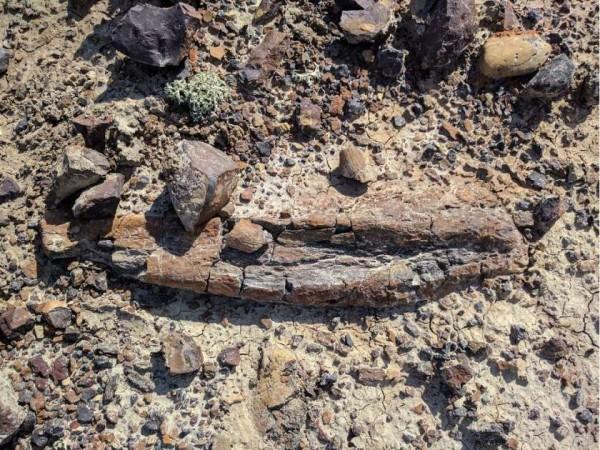
Recently, fossils of a dinosaur were discovered accidentally in Midland Provincial Park in Alberta, Canada.
They were found in a Canadian Park while testing a new model of Mars rover. The finding was made while a design team was looking for a Mars-like terrain to test a Mars rover for a competition.
"We initially noticed a rock that looked surprisingly like a thigh bone protruding from the ground," Danno Peters, a student studying engineering physics at the University of Saskatchewan, told Live Science.
"It was encased in rock which was lighter than the surrounding stones," Peters added.
Here's all to know about this accidental finding:
- The discovery was made in June 2017 by students from the University of Saskatchewan. The team of students was formed in 2005 and they have been working on developing technologies for Mars rovers, satellites as well as other space-related engineering projects.
- Danno Peters, the president of the team, couldn't believe that the "weird rocks" they found were actually fossils of a dinosaur. He was a part of the cohort which had to choose a Mars-like location for the competition by analysing all the badlands in Saskatchewan.
- Midland Provincial Park was chosen as the best landscape as its ground had high iron content and it qualified to be precise for their challenges, but nobody expected dinosaur bones to be found in that terrain.
- The fossils were found to be an exceptionally preserved specimen, which belonged to the herbivorous species called hadrosaur, which were duck-billed dinosaurs known for the flat, duck-bill appearance of the bones in their snouts. The fossils of these species have been found in Asia, Europe and North America.
- A report by Saskatoon Star Phoenix stated that the area where the bones were found was marked off and the Rover challenge was continued.
- The rovers that were competing in the Canadian International Rover Challenge were devised to assist humans on Mars.
"Most rovers being designed are for exploration, and are large-scale and very heavy — like a minivan or truck. This competition was for smaller rovers that could be controlled remotely and used for repairs and experiments at a Martian habitat," Danno Peters stated.
7. Danno Peter stated that this competition was small yet successful. They might conduct this competition annually as this one was a trial run.














